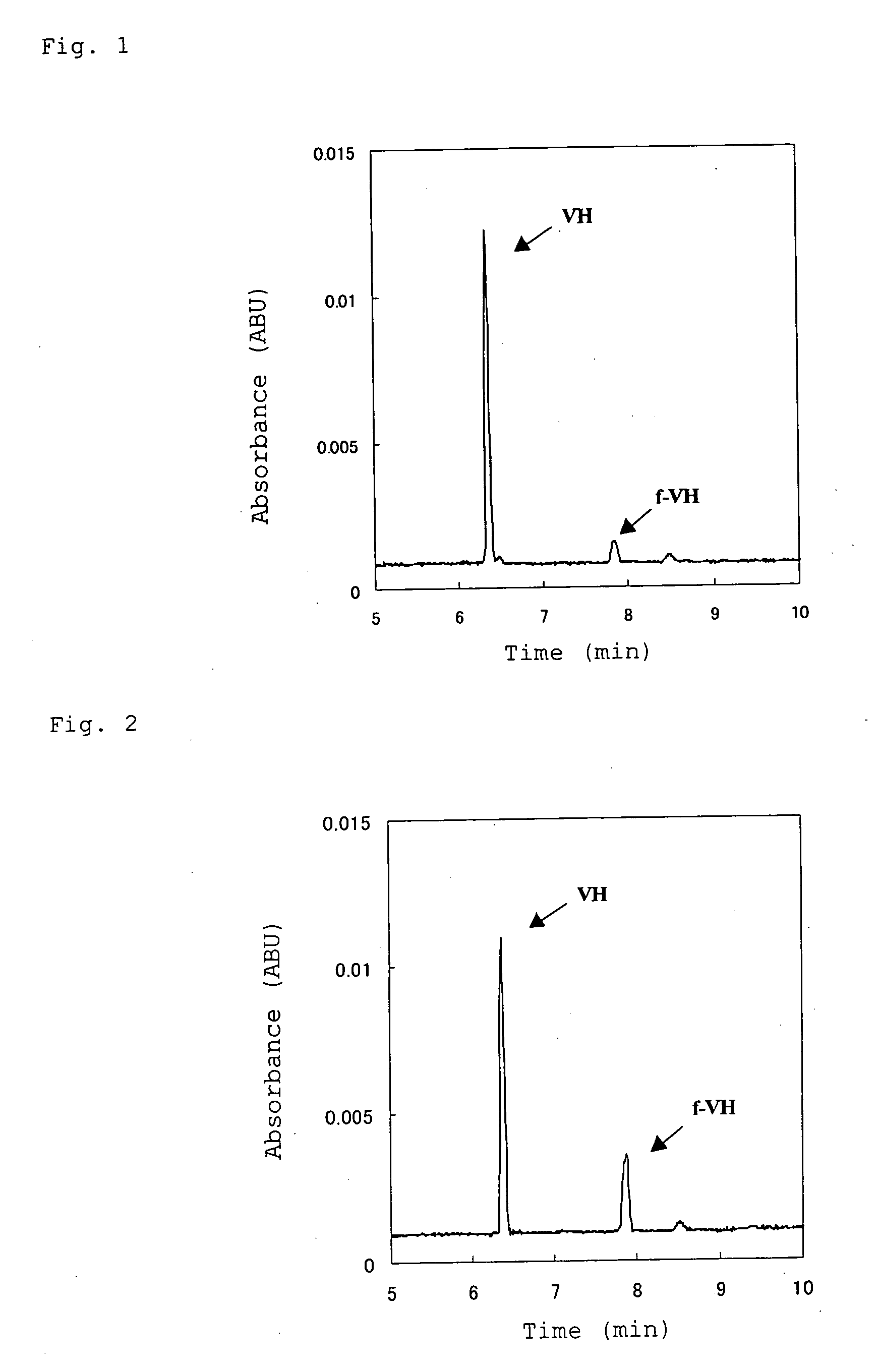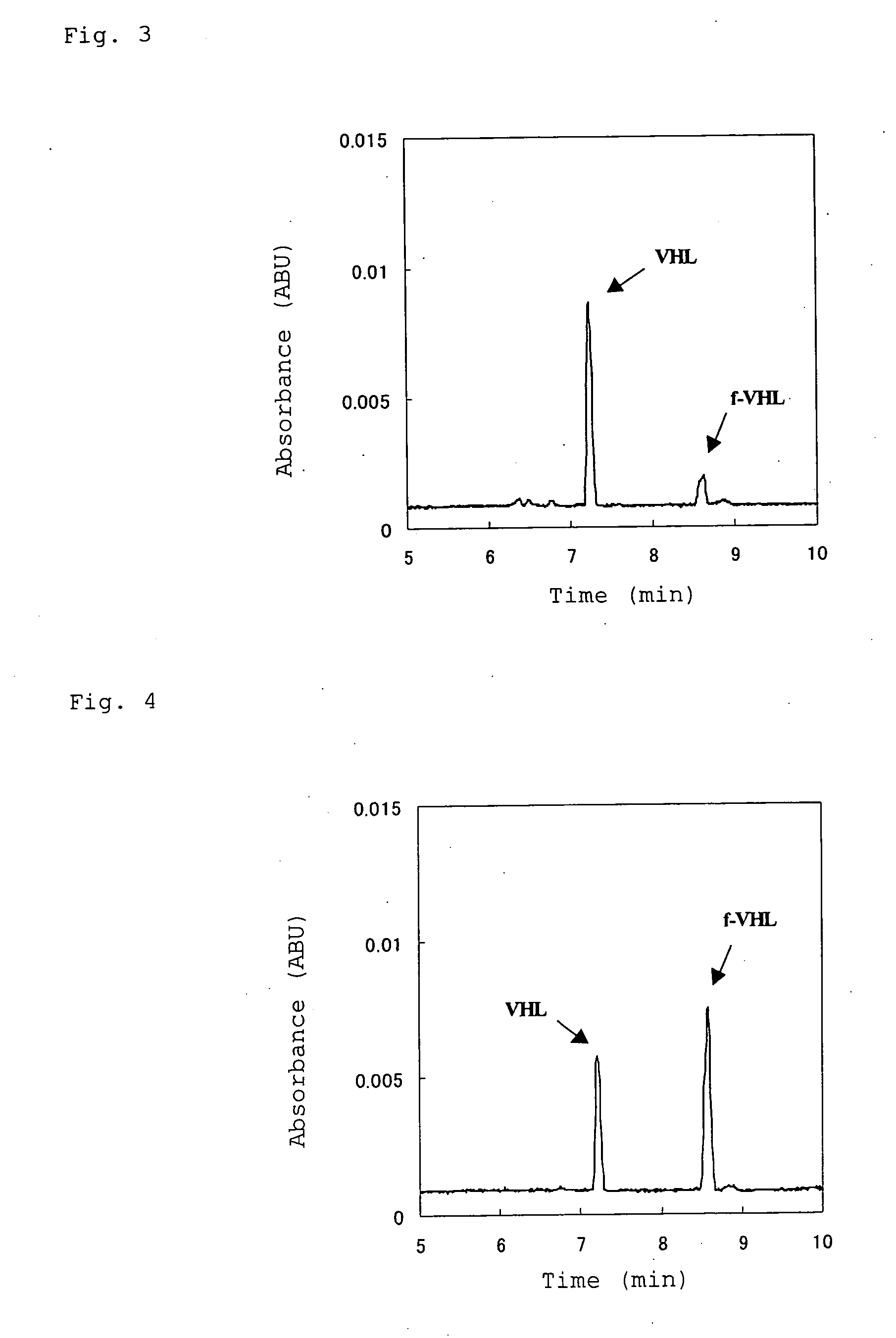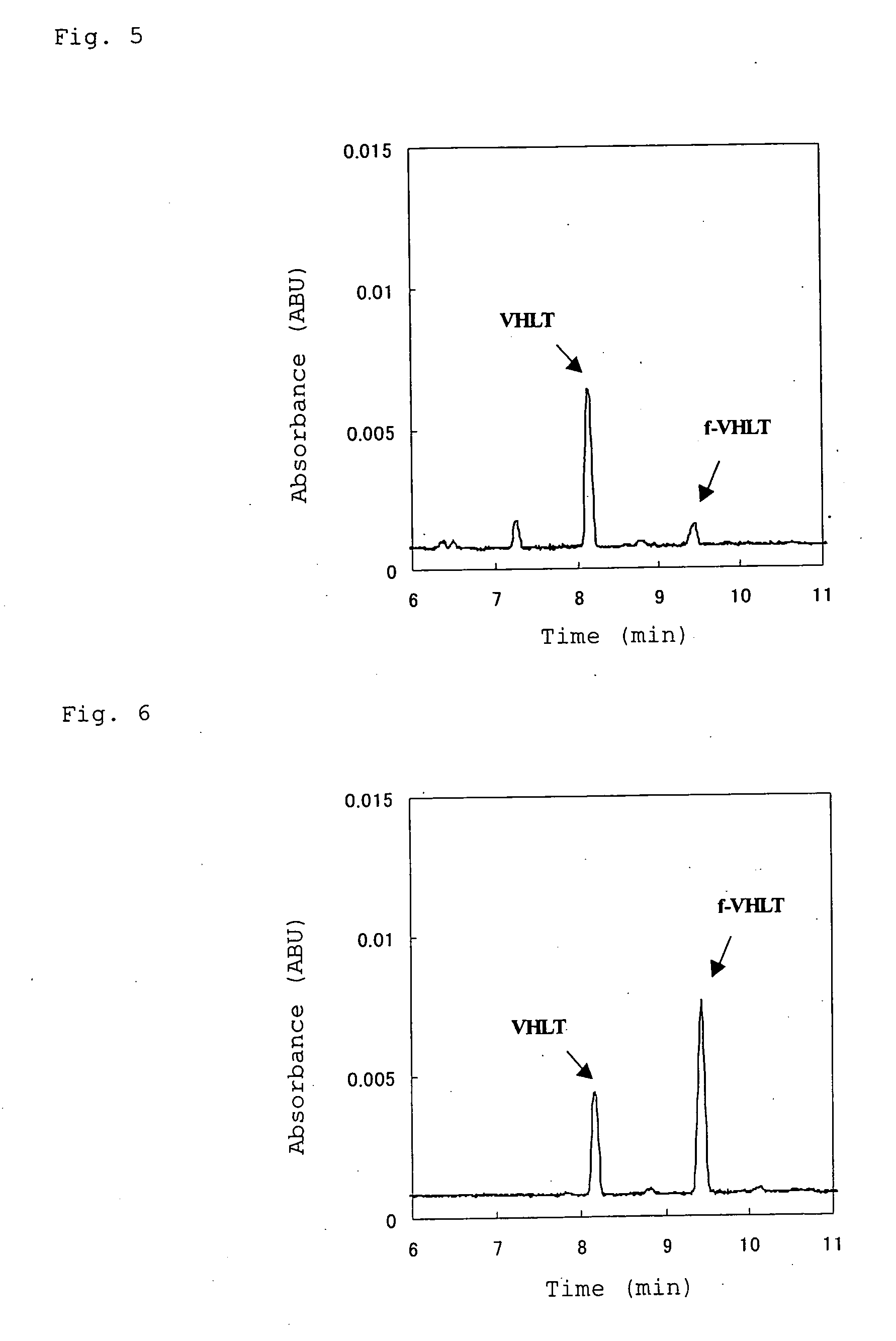Defructosylation method
a technology of fructosylation and fructose, which is applied in the field of fructosylation methods, can solve the problems of poor economics, inability to meet the needs of patients, etc., and achieve the effect of quantitative determination accuracy
- Summary
- Abstract
- Description
- Claims
- Application Information
AI Technical Summary
Benefits of technology
Problems solved by technology
Method used
Image
Examples
example 1
Preparation of defructosylation enzyme originating from a plant belonging to the family Rosaceae
[0042] The skin and core portion including seeds of a Pyrus pyrifolia fruit were removed, and, to the remaining flesh portion, 100 mM sodium acetate (pH 4.5) (100 mL / 100 g of the flesh portion) containing 300 mM sodium chloride was added, and the resultant mixture was directly crushed by means of a mixer. The product was subjected to centrifugal separation to remove solid substances, whereby a crude extract was prepared. To the crude extract, PVPP (polyvinylpolypyrrolidone: product of Nacalai Tesque, Inc.) was added in an amount of 2%, followed by stirring for 30 minutes at room temperature. Thereafter, PVPP was removed through centrifugal separation, to thereby yield a treated solution, which served as a crude enzyme solution.
example 2
Preparation of defructosylation enzyme originating from a plant belonging to the family Vitaceae
[0043] The skin of a Vitis vinifera fruit was removed, and the remaining flesh portion was crushed by means of a mixer. The product was subjected to centrifugal separation to remove solid substances, whereby a crude extract was produced, which served as a crude enzyme solution.
example 3
Preparation of defructosylation enzyme originating from a plant belonging to the family Umbelliferae
[0044] A Daucus carota rhizome was directly disrupted through use of a juicer, followed by centrifugation, to thereby remove solid substances. The thus-prepared crude extract was filtrated through use of a Millex filter (0.45 μm: product of Millipore Corporation), whereby a transparent extract was prepared. Cold ethanol (4 mL) was added to the extract (3 mL), and the formed precipitate was removed through centrifugation. To the supernatant, cold ethanol was added again, and the formed precipitate was collected through centrifugal separation. The obtained precipitate was dissolved in a small amount of 20 mM phosphate buffer (pH 7.0), to thereby prepare a crude enzyme solution.
PUM
 Login to View More
Login to View More Abstract
Description
Claims
Application Information
 Login to View More
Login to View More - R&D
- Intellectual Property
- Life Sciences
- Materials
- Tech Scout
- Unparalleled Data Quality
- Higher Quality Content
- 60% Fewer Hallucinations
Browse by: Latest US Patents, China's latest patents, Technical Efficacy Thesaurus, Application Domain, Technology Topic, Popular Technical Reports.
© 2025 PatSnap. All rights reserved.Legal|Privacy policy|Modern Slavery Act Transparency Statement|Sitemap|About US| Contact US: help@patsnap.com



